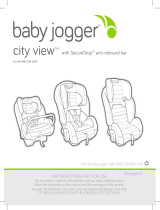6
Model Name _________________________
Model Number _______________________
Date of Manufacture __________________
Date of Purchase _____________________
For future reference or if you change addresses, record the model name, model number,
date of manufacture, and purchase date of this car seat below. You can find this
information either on the registration card if you still have it or on the date label located
on the back of the car seat.
In the U.S.A, please contact our Customer Service Department with any questions you
may have concerning parts, use, or maintenance. When you contact us, please have
your product’s model number and date of manufacture ready so that we may help you
efficiently. These numbers can be found on a sticker on the back side of your car seat.
For additional resources or to get your car seat checked by a child passenger safety
technician, please visit the following web sites:
www.nhtsa.gov • www.seatcheck.org • www.safekids.org • www.cpsc.gov
If You Need Help
STOP using this car seat and throw it away 10 years after the date of manufacture.
Look for date of manufacture label on back of the car seat.
Graco Children’s Products Inc. advises against loaning or passing along a car seat
unless you know the complete history of the product. We also advise against
purchasing a car seat second hand.
This child restraint meets or exceeds all applicable requirements of Federal Motor
Vehicle Safety Standard 213 for use in motor vehicles.
This child restraint is certified for use in aircraft only when used with the
internal harness system. Use only forward-facing aircraft seats. Follow the
instructions for vehicle installation. See page 51 and sections 3-C or 4-C.
This child restraint is NOT certified for use in aircraft when used as a booster
seat because aircrafts do not have shoulder belts.
Contact the airline for their specific polices.
Certification
Car Seat’s Useful Life





















